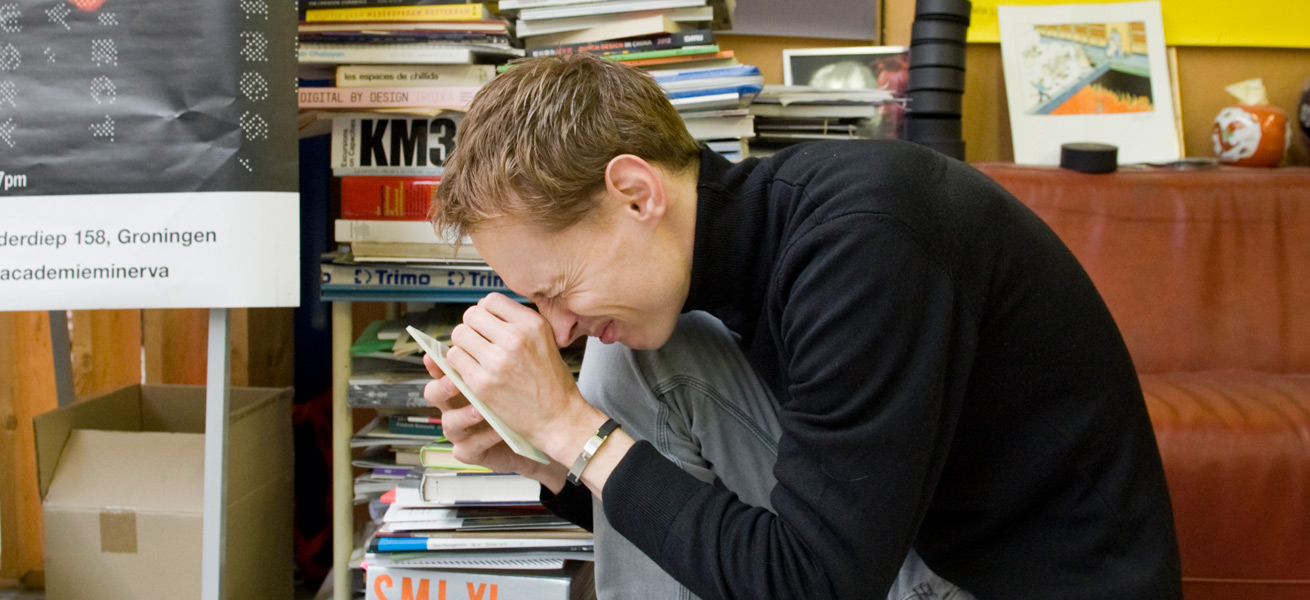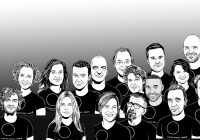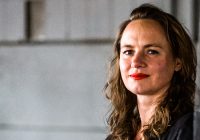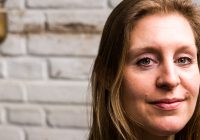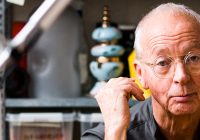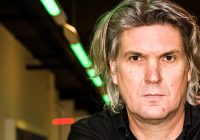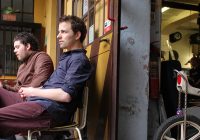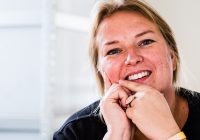Text by Jeanne Tan
Translation by Xiyang Wang
Photo by Ilco Kemmere
Daan Roosegarde is all about ideas. His vision is for technology to become interactive and for cities to become smarter. He has injected the design realm with a massive dose of hope by presenting projects that prove that even the most far-fetched and innovative high-tech ideas are not just science fiction, but can and will be realized.
In the past year, he added to his Dutch studio of designers and engineers and has opened a second Studio Daan Roosegaarde in Shanghai as part of the Dutch Design Workspace initiative of the DDFA (Dutch Design Fashion Architecture). He chose China because of its committed intellectual climate and its hunger for change, innovation, and creativity. China also understands its own desperate need for social and sustainable design.
“The Incubator program has been helpful,” Roosegaarde says. “It helps with logistical things and makes the business side of China more accessible, but it is the match-making that has worked best for me.”
Roosegaarde now has a particularly good relationship with Mr. Lou, a university professor at Tongi University in Shanghai, and he now gives guest lectures at the university. He has even employed some of the graduates in his studio to work on his interactive light projects for public spaces in Shanghai.
“Actually, I think the Workspace functions so well that I jokingly suggested to the director that they set up a second one back in the Netherlands,” Roosegaarde says. “Designers need to be half priest, half entrepreneur, and this set-up helps them cross those boundaries.
Where the Dutch DDFA has gotten it so right is the balance they have managed to strike between support and non-interference. “To be honest, I’m a bit allergic to government funding and initiatives as I have seen it fail so often,” Roosegaarde says, “but they are doing a great job – they know what is relevant and know how to create an engine.”

Daan Roosegaarde
It is also Roosegaarde’s own mentality that has helped make his China chapter such a success. “China has a lot of problems,” he says, “but you shouldn’t come to China to change it, rather, China should change you. My angle is to reinterpret their own values in a new way.”
The happy marriage makes good sense. China is a pulsating nation in love with change and a desire to adapt. “I find that sort of forward thinking and energy lacking in the Netherlands,” Roosegaarde says. “The Dutch just don’t have that same commitment to change. When I give lectures in China in auditoriums with one hundred seats, two hundred people show up and there is always an hour of questions. That makes me happy because my interest isn’t just in building stuff, but exchanging ideas and doing things differently to how it is predictably done in Europe.”
But it isn’t always easy. Doing business in China does take some getting used to. Nothing is transparent. “It’s often hard to work out what the Chinese are thinking,” Roosegaarde says, “and the way they do business is different. I’ll find myself in a five-hour drinking session with them, do five minutes of business talk and only later realize that that was the meeting. The deal is done.”
For years, Roosegaarde has been saying that the first sustainable highway will be in China, not Europe. “I was driving along one day thinking that everybody thinks about car design but nobody considers the road,” he says. “‘I started wondering if we could make roads more interactive and sustainable.”
Roosegaarde started researching the idea and making artist impressions. “You need to act,” he says. “not store the idea in a drawer. The time frame has to be now to ten years – not one hundred years. Otherwise you can’t really be held accountable.”
He was then commissioned by the city of Oss, in the Netherlands, and BMW to make a series of interactive designs. His goal was to work out a way for cars to control streetlights and for roads to become an active interface.
Then, a director at Heijmans, one of the largest Dutch construction firms, called him directly on his cell phone and said “How much?” “That is a compliment in China,” Roosegaarde laughs.
Heijmans wants an electronic smart highway and they want Roosegaarde, who has never built a road before, to do it. The road would use traffic as a source of electricity to power streetlights and even cars themselves via electric charging stations.
“We’ll start testing in about two years and in five years time we’ll build a road,” Roland de Waal, Executive Board Member at Heijmans told the Dutch media. “It is smart and sexy,” he added, “and we need a designer like Roosegaarde to push this.”
So it will be interesting to see who wins the race to build the first smart highway – Europe or China. Either way, Roosegaarde is excited to be a part of showing Europe how Chinese innovation can be copy-morphed back home to speed up the pace of change in design.
This captures everything Roosegaarde is about – designing ways for technology to escape from gadgets and to become part of the actual landscape. No more empty talk. He is irritated, even angry, at the never-ending production of more objects to fill more rooms. “We don’t need any more chairs,” he says. “We need designers who can work out ways to shape the future.”
Studio Roosegaarde.
www.studioroosegaarde.net
This interview was published in Connecting the Dots #6 for South China in 2012.
For entire magazine click here.
DaanRoosegaarde是一个非常有想法的人。他追求的是让技术变得可以互动,让城市变得更加智能。通过展现他所做的项目,DaanRoosegaarde让人们看到设计领域里的诸多希望。这些案例向人们证明了,即使是那些看似最不切实际的和最具有创新性的高科技想法,并非仅存在于科幻小说之中而是可以或将会被实现的。
在过去的一年里,他让设计师与工程师一起加入到他在荷兰的工作室并在上海开办了第二个并以他名字命名的设计工作室。该工作室是由荷兰设计时尚建筑协会(DDFA)创办的荷兰设计会(Dutch Design Workspace)的成员之一。他选择中国是因为中国具备致力于学术研究的氛围以及它所具有的对于改变、创新和创意的迫切要求。
Roosegaarde说:“这个孵化项目(指由荷兰设计时尚建筑协会创办的致力于在中国推广荷兰设计和荷兰设计师的荷兰设计会项目)是有益处的,它提供了后勤上的帮助并使得在中国开展业务更方便,它所发挥的“牵线搭桥”作用最适合我的需要。”
Roosegaarde现在与上海同济大学的罗教授建立了特别好的关系并在这所大学开办讲座。他甚至还聘请了这所大学的一些毕业生来为上海一些公共空间设计交互式灯光。
Roosegaarde 说:“实际上,我认为荷兰设计会这个孵化项目发挥了很好的作用,我还以开玩笑的方式建议这个项目的总监在荷兰也开设一个这样的设计会,设计师需要成为半个传教士、半个商人,这种状态可以帮助他们跨界。”
荷兰设计时尚建筑协会(DDFA)的成功之处在于他们在平衡“支持但不干涉”这个问题上把握的很好。Roosegaarde 表示:“坦率地说,我对政府拨款和倡议之类的事很过敏,因为我经常看到这种做法最后以失败告终。但荷兰设计时尚建筑协会做得很好,他们知道什么事是重要的,也知道如何创建一种动力机制。”
此外,Roosegaarde自身的心态也帮助他在中国取得成功。他说:“中国有很多的问题,但你到中国来不是为了要改变它,相反,中国会改变你。我的观点是用一种新的方式来重新解释它自身的价值。”
美好的结合才是明智的。中国是一个很活跃的国家,乐于改变并希望适应变化。Roosegaarde说:“荷兰有几分超前意识但缺乏动力,荷兰人不会如此承诺去改变。”当我在中国做讲座时,在只能容纳一百人的礼堂里会有两百人来听讲座,而且总是会有大量的问题提出来。这让我很高兴,因为我的兴趣不仅仅是做东西,更重要的是交换意见,以不同于欧洲所预见的方式来做事情。
但这并非总是很容易,在中国做事情确实需要一些时间来适应。没有什么是透明的。Roosegaarde说:“想要知道中国人正在想什么总是很困难的,他们做事情的方式与我们不同。我会发现自己和客户在一个5个小时的酒会中只用了5分钟的时间来谈公事,到后来才发现原来那短暂的交谈就是会议。合作就这么达成了。”
多年来,Roosegaarde一直认为第一条可持续性的高速公路将会在中国建成,而不是在欧洲。他说:“有一天我正在开车并在思考,每个人都在考虑关于车的设计却没有人考虑公路,于是我开始琢磨是否我们可以把公路修建的更有互动性和可持续性。”
于是Roosegaarde开始研究这个想法并绘制想象图。他说:“你需要采取行动,不要把想法封存起来。你要考虑的时间范围是从现在到未来十年而非一百年,否则,你无法真正放手去做。”
他之后接受荷兰奥斯市和宝马公司的委托做了一系列的交互设计。他的目标是想出一种方式通过车辆来控制路灯,并使公路成为一个活跃的界面。
这之后,Heijmans 公司(荷兰最大的建造公司之一)的一位总监直接打电话问他说:“这需要多少钱?”Roosegaarde笑着回答说:“这是中国关心的问题。”
Heijmans 公司想要建设一条电子智能公路,他们打算让Roosegaarde这样一个完全没有造路经验的人去做这件事。这条公路会利用车流作为电力来源来对路灯供电,甚至为电动车在充电站充电。
Heijmans 公司执行委员会成员Roland de Waal告诉荷兰媒体:“我们将在未来两年左右的时间里进行测试,并将在未来五年的时间内修建这条公路,”他补充说到:“这条公路会很智能、很性感,我们需要一个像Roosegaarde这样的设计师来推动这个项目。”
看看,到底是欧洲还是中国,谁会赢得这场修建第一条智能高速公路的比赛将会是很有意思的。无论谁胜,作为向欧洲展现中国创新是如何被欧洲借鉴从而加快改变的一分子,Roosegaarde感到很激动。
“用设计的手段让技术脱离工具的样式而成为真实环境的组成部分”,这是对Roosegaarde最好的概括。这不是空谈,他非常反对为了把更多的物品填入更大的空间而进行的永无止境的生产。他说:“我们不需要任何更多的椅子,我们需要能够创造未来的设计师。”

